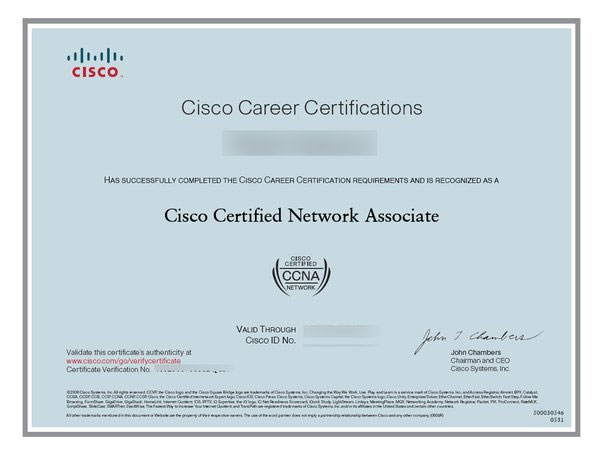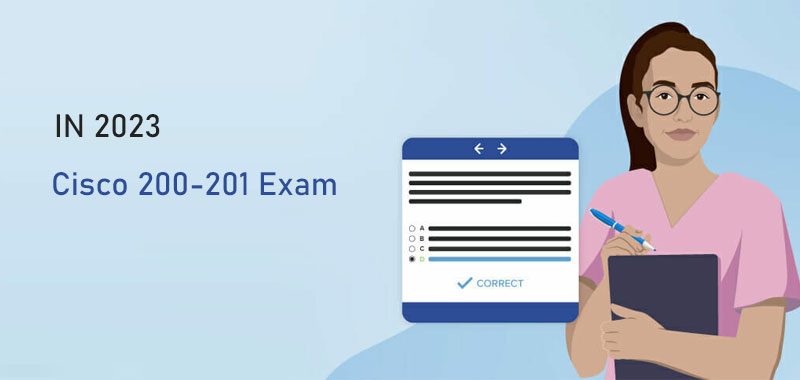[2017 PDF free download] Free Cisco 200-105 Exam PDF Practice Questions And Answers Download At Lead4pass With 100% Pass Guarantee
Cisco 200-105 exam test is the industry leader in information technology, and getting certified by them is a guaranteed way to succeed with IT careers. We help you do exactly http://www.leads4pass.com/200-105.html that with our high quality Cisco 200-105 ICND2 Interconnecting Cisco Networking Devices Part 2 (ICND2 v3.0) training materials.
Question No : 1
At which layer of the OSI model is RSTP used to prevent loops?
A. physical
B. data link
C. network
D. transport
Answer: B
Explanation:
RSTP and STP operate on switches and are based on the 200-105 exchange of Bridge Protocol Data Units (BPDUs) between switches. One of the most important fields in BPDUs is the Bridge Priority in which the MAC address is used to elect the Root Bridge, RSTP operates at Layer 2.
Question No : 2
Refer to the exhibit.

At the end of an RSTP election process, which access layer switch port will assume the discarding role?
A. Switch3, port fa0/1
B. Switch3, port fa0/12
C. Switch4, port fa0/11
D. Switch4, port fa0/2
E. Switch3, port Gi0/1
F. Switch3, port Gi0/2
Answer: C
Explanation:
In this question, we only care about the Access Layer switches (Switch3 & 4). Switch 3 has a lower bridge ID than Switch 4 (because the MAC of Switch3 is smaller than that of Switch4) so both ports of Switch3 will be in forwarding state. The alternative port will surely belong to Switch4.
Switch4 will need to block one of its ports to avoid a bridging loop between the two switches. But how does Switch4 select its blocked port? Well, the answer is based on the BPDUs it receives from Switch3. A BPDU is superior than another if it has:
1. A lower Root Bridge ID2. A lower path cost to the Root3. A lower Sending Bridge ID4. A lower Sending Port ID
These four parameters are examined in order. In this specific case, all the BPDUs sent by Switch3 have the same Root Bridge ID, the same path cost to the Root and the same Sending Bridge ID. The 200-105 only parameter left to select the best one is the Sending Port ID (Port ID = port priority + port index). In this case the port priorities are equal because they use the default value, so Switch4 will compare port index values, which are unique to each port on the switch, and because Fa0/12 is inferior to Fa0/1, Switch4 will select the port connected with Fa0/1 (of Switch3) as its root port and block the other port -> Port fa0/11 of Switch4 will be blocked (discarding role)
Question No : 3
What is one benefit of PVST+?
A. PVST+ supports Layer 3 load balancing without loops.
B. PVST+ reduces the CPU cycles for all the switches in the network.
C. PVST+ allows the root switch location to be optimized per VLAN.
D. PVST+ automatically selects the root bridge location, to provide optimized bandwidth usage.
Answer: C
Explanation:
Per VLAN Spanning Tree (PVST)
Introduction
Per VLAN Spanning Tree (PVST) maintains a spanning tree instance for each VLAN configured in the network. This means a switch can be the root bridge of a VLAN while another 200-105 switch can be the root bridge of other VLANs in a common topology. For example, Switch 1 can be the root bridge for Voice data while Switch 2 can be the root bridge for Video data. If designed correctly, it can optimize the network traffic.
Question No : 4
Refer to the exhibit.

Each of these four switches has been configured with a hostname, as well as being configured to run RSTP. No other configuration changes have been made. Which three of these show the correct RSTP port roles for the indicated switches and interfaces? (Choose three.)
A. SwitchA, Fa0/2, designated
B. SwitchA, Fa0/1, root
C. SwitchB, Gi0/2, root
D. SwitchB, Gi0/1, designated
E. SwitchC, Fa0/2, root
F. SwitchD, Gi0/2, root
Answer: A,B,F
Explanation:
The question says “no other configuration changes have been made” so we can understand these switches have the same bridge priority. SwitchC has lowest MAC address so, it will become root bridge and 2 of its ports (Fa0/1 & Fa0/2) will be designated ports (DP). Because SwitchC is the root bridge the 2 ports nearest SwitchC on SwitchA (Fa0/1) and SwitchD (Gi0/2) will be root ports (RP) -> B and F are correct.
SwitchB must have a root port so which port will it choose? To answer this question we need to know about STP cost and port cost.
In general, “cost” is calculated based on bandwidth of the link. The 200-105 higher the bandwidth on a link, the lower the value of its cost. Below are the cost values you should memorize:
Link speed Cost SwitchB will choose the interface with lower cost to the root bridge as the root port so we must calculate the cost on interface Gi0/1 & Gi0/2 of SwitchB to the root bridge. This can be calculated from the “cost to the root bridge” of each switch because a switch always advertises its cost to the root bridge in its BPDU. The receiving switch will add its local port cost value to the cost in the BPDU.
SwitchC advertises its cost to the root bridge with a value of 0. Switch D adds 4 (the cost value of 1Gbps link) and advertises this value (4) to SwitchB. SwitchB adds another 4 and earns that it can reach SwitchC via Gi0/1 port with a total cost of 8. The same process happens for SwitchA and SwitchB learns that it can reach SwitchC via Gi0/2 with a total cost of 23 -> Switch B chooses Gi0/1 as its root port.
Read more: http://www.leads4pass.com/200-105.html Now our last task is to identify the port roles of the ports between SwitchA & SwitchB. It is rather easy as the MAC address of SwitchA is lower than that of SwitchB so Fa0/2 of SwitchA will be designated port while Gi0/2 of SwitchB will be alternative port.
Download free Cisco 200-105 exam pdf files: https://drive.google.com/open?id=0B7LFs7RuvDV4ZEttRFVZb2ZxbUk
Watch the video to learn more:

![[New May 2023] Updated 300-425 Dumps For 300-425 ENWLSD Exam](https://www.ciscoexampdf.com/wp-content/uploads/2023/05/Updated-300-425-Dumps.jpg)
